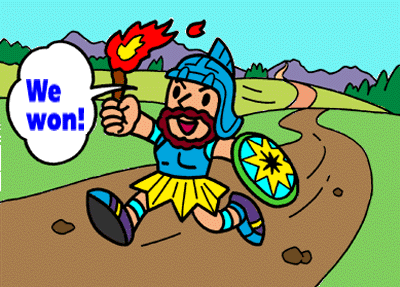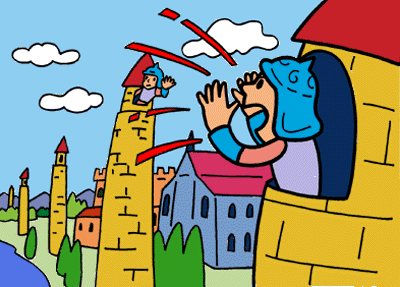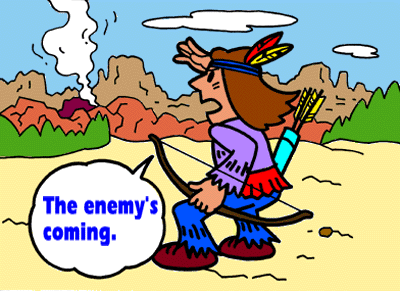
 |
|
 |

| Before electronic communications were developed as they are today, people had to work hard to communicate over long distances using methods like smoke signals, light signals or waving flags. |
 Shockwave |
| Torch Relays Around the 13th century BC, this method is said to have been used by the Greeks to spread word of their victory over Troy in the Trojan War. This was a slow method because torches were passed from hand to hand, and bearers had to be careful that the fire didn't go out. |
 Shockwave |
| Voice Relays Around 550 BC, Cyrus the Great (the ruler of Persia) built rows of towers radiating out from his capital like the spokes of a wheel, with soldiers stationed atop each tower who could shout messages in a voice that could reach to the next tower. Because this was an oral relay system, messages sometimes changed somewhat along the way, as often happens when playing the 'telephone game'. |
 Shockwave |
| Smoke Signals Indians in western North America used smoke signals to communicate, just as seen in the movies. Smoke signals have been used around the world since before recorded history, but require prior agreement between the parties on a set of signals to be used and are unable to convey complex messages. The same is true of flag-based signal systems. |

|
|
Letters The discovery of writing made it possible to send accurate and voluminous information. Methods of carrying letters evolved, such as foot and horse couriers, but delivery still took time. During the Prussian-French war in 1870 a system of 'carrier pigeons' was used but accuracy was hindered by the fact that some birds arrived and some did not. |
| People continued the quest for a method of communication that could carry large amounts of information quickly, accurately, at any time and to any location, cheaply and safely. This would find its expression in the invention of the telegraph and telephone. |


|
Return to the Gakushukan Home Page | ||

|
Back | Forward |

|